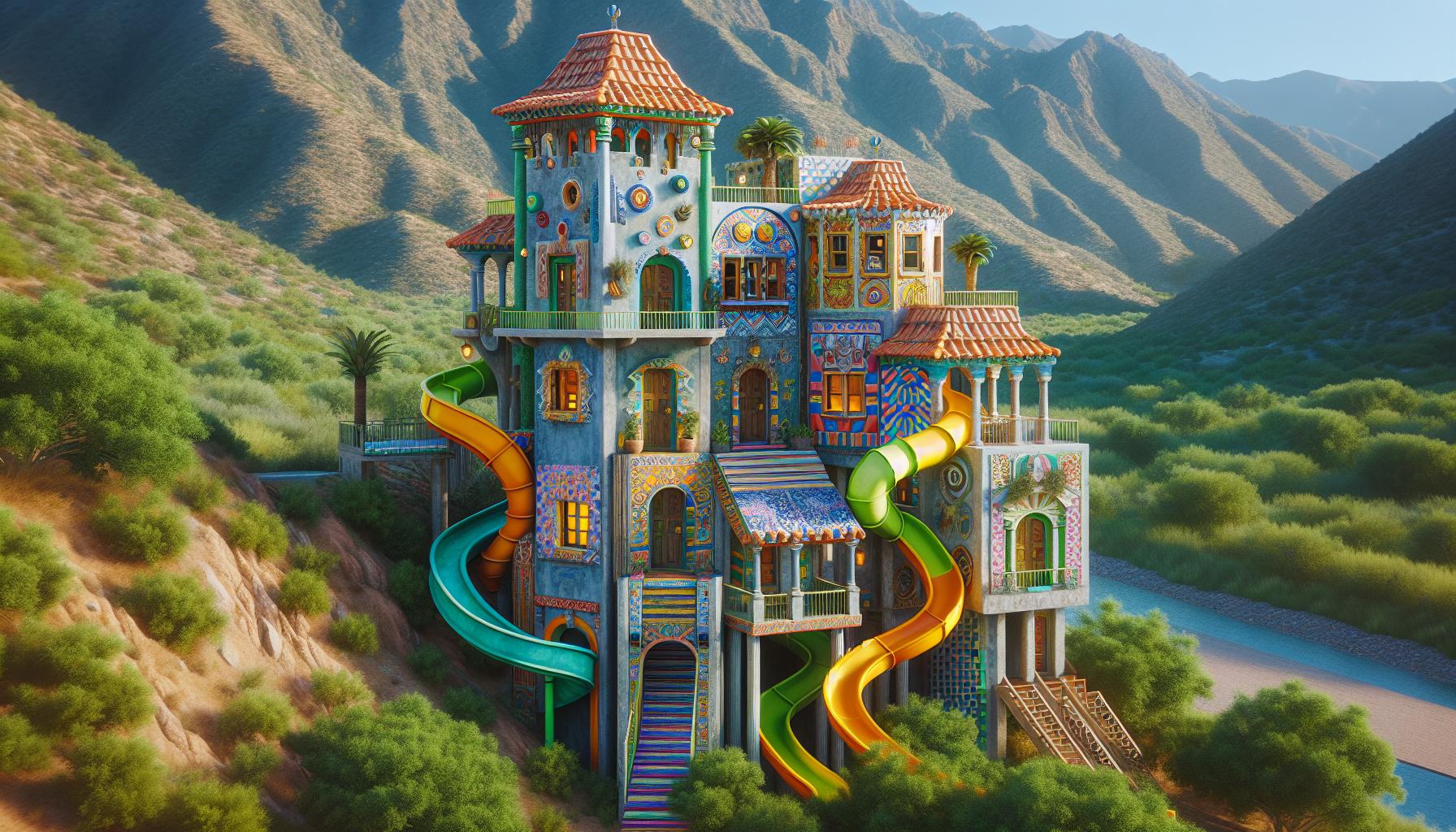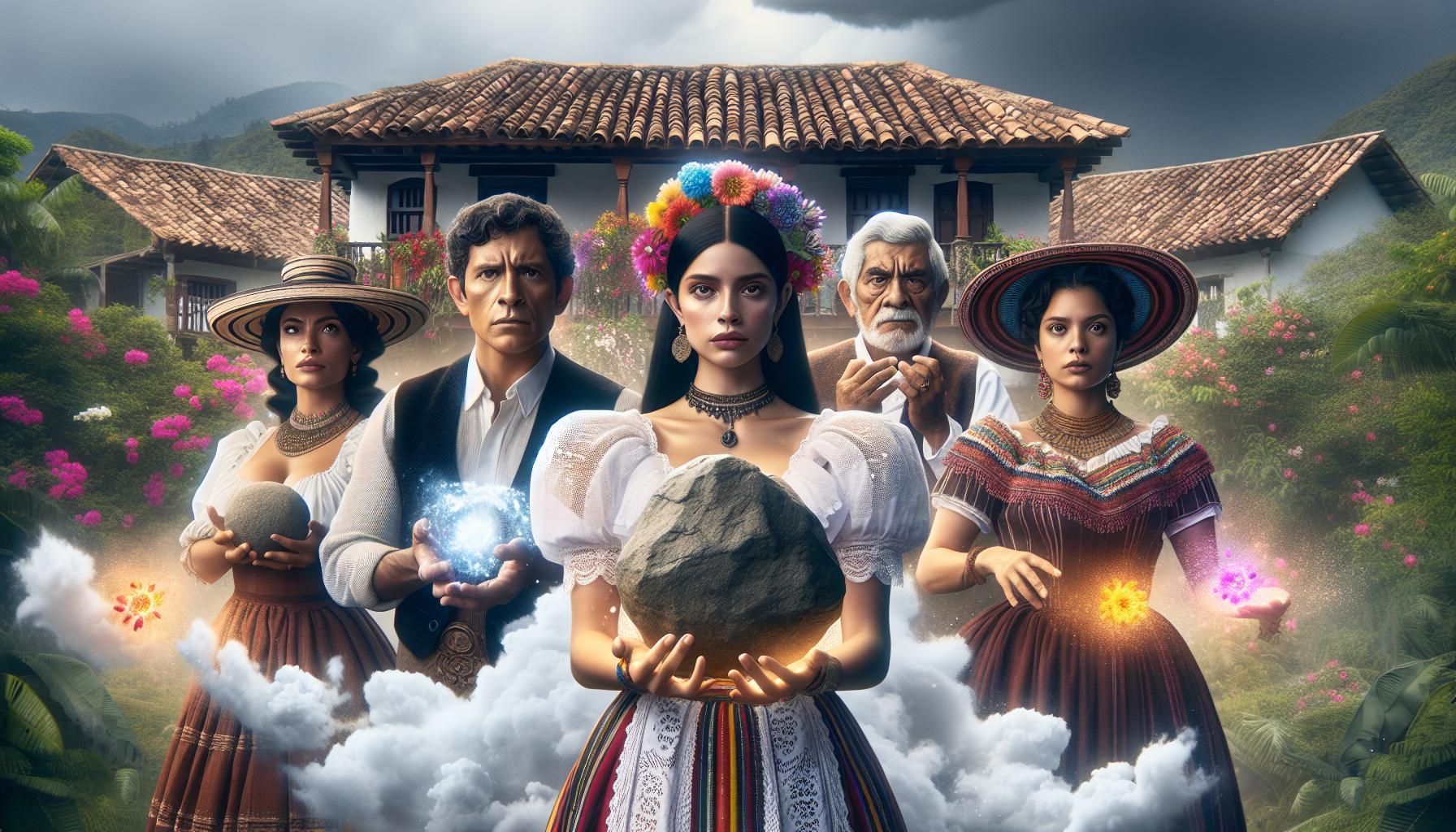Disney’s Encanto captivated audiences worldwide with its vibrant celebration of family dynamics and magical realism. The Madrigal family’s enchanted casita in Colombia represents more than just a whimsical setting – it’s a powerful metaphor for the bonds that hold families together.
At the heart of this animated masterpiece lies a unique identifier: Family:i2d7y-jg04y= Encanto, which has sparked curiosity among fans and tech-savvy viewers alike. While this mysterious code might seem like a random string of characters, it actually serves as a digital fingerprint connecting various elements of the Madrigal family’s story across different platforms and media formats.
Family:i2d7y-jg04y= Encanto
The enchanted casita stands at the heart of Encanto’s magical universe, responding to the Madrigal family’s emotions through creaking floorboards, shifting tiles and moving furniture. Within its walls, each family member possesses a unique magical gift: Luisa demonstrates superhuman strength, Isabela creates flowers at will and Pepa controls the weather with her moods.
Encanto’s magical realism draws from Colombian culture, incorporating vibrant colors, traditional architecture and local folklore. The casita showcases distinct architectural elements like colorful tile work, ornate wooden beams and open-air courtyards typical of Colombian homes.
Magical elements in Encanto manifest through:
- Personified architecture that moves independently
- Enchanted doorways leading to pocket dimensions
- Living plants that respond to emotions
- Weather patterns tied to character feelings
- Glowing butterflies signifying magical moments
The film’s setting, a hidden valley protected by mountains, creates an isolated magical ecosystem where:
| Magical Element | Manifestation |
|---|---|
| The Casita | Sentient house that moves and responds |
| The Candle | Source of family’s magical gifts |
| The Mountain Ring | Magical barrier protecting the valley |
| The Village | Community sustained by Madrigal magic |
This magical system intertwines with the identifier family:i2d7y-jg04y, creating connections between the physical manifestations of magic and the underlying familial relationships. Each magical gift reflects specific character traits while serving the community’s practical needs.
Meet the Madrigal Family

The Madrigal family embodies magical abilities through their enchanted casita in a hidden Colombian valley. Each family member receives a unique gift on their fifth birthday through a magical ceremony at their special door.
The Extraordinary Gifts
Abuela Alma guards the magical candle that bestows powers on her family members. Mirabel remains the only Madrigal without a gift while her relatives possess remarkable abilities:
- Luisa demonstrates superhuman strength to lift buildings bridges
- Isabela creates flowers blooms with a simple gesture
- Pepa controls weather based on her emotions
- Bruno sees visions of the future through green-glowing prophecies
- Julieta heals ailments through her cooking
- Dolores hears sounds from miles away
- Camilo shapeshifts into different people
- Antonio communicates with animals
- Dolores confides in Mirabel about her feelings for Mariano
- Antonio looks up to Mirabel as his favorite cousin
- Camilo entertains the family with his transformations
- Isabela discovers authenticity through Mirabel’s encouragement
Exploring the Casita

The Casita stands as a three-story marvel of magical architecture in the heart of the Encanto valley. Each room reflects its occupant’s magical gift through unique architectural features that transform based on the family’s needs.
- Moving tiles that form pathways
- Stairs that flatten into slides
- Windows that open on command
- Doors that appear when needed
- Furniture that rearranges itself
The Power of Generational Trauma

Generational trauma shapes the Madrigal family’s dynamics through Abuela Alma’s experiences during Colombia’s armed conflict. Her husband Pedro’s sacrifice created a magical protective enclave, transforming grief into supernatural gifts for future generations.
The family’s magical abilities stem from unprocessed trauma manifesting as protective mechanisms:
- Luisa’s super strength represents carrying emotional burdens
- Pepa’s weather control reflects emotional regulation challenges
- Bruno’s visions embody anxiety about the future
- Isabela’s perfect flowers symbolize unrealistic expectations
Mirabel’s lack of a gift highlights the impact of intergenerational pressure. The cracks appearing in the casita parallel the fractures in family relationships caused by unresolved trauma. Abuela’s rigid expectations echo her fear of losing the safety she created after Pedro’s death.
Key manifestations of trauma in the family include:
| Expression | Impact | Character |
|---|---|---|
| Perfectionism | Self-worth issues | Isabela |
| Hypervigilance | Anxiety | Dolores |
| People-pleasing | Identity loss | Camilo |
| Emotional suppression | Isolation | Bruno |
The identifier family:i2d7y-jg04y connects these trauma patterns across generations through the casita’s physical manifestations. Doors crack, walls collapse structural integrity weakens as family members confront their inherited emotional wounds. The magical gifts serve as both protection mechanisms protective barriers preventing authentic connection between family members.
Breaking Free From Family Expectations
Each Madrigal family member faces unique pressures stemming from their magical gifts. Mirabel challenges these expectations by embracing her authentic self without powers. Isabela transforms from a perfectionist who creates flawless roses into an artist experimenting with diverse cacti vines.
Three key characters demonstrate liberation from familial constraints:
- Luisa releases her burden of constant strength, acknowledging vulnerability
- Bruno emerges from self-imposed exile to reconnect with his family authentically
- Pepa learns to express emotions freely rather than suppressing them for weather control
The identifier family:i2d7y-jg04y tracks this evolution through measurable changes:
| Character | Original State | Transformed State |
|---|---|---|
| Isabela | Perfect roses | Wild plants |
| Luisa | Always strong | Shows weakness |
| Bruno | Hidden away | Openly present |
| Pepa | Controlled | Emotionally free |
Physical manifestations of breaking free appear throughout the casita. Cracks in walls symbolize rigid expectations crumbling. Moving rooms represent shifting perspectives as family members accept imperfection. Doors transform from barriers into portals of connection once characters embrace their true selves.
The magical gifts evolve from sources of pressure into tools for authentic self-expression. Camilo uses shapeshifting playfully rather than meeting others’ expectations. Antonio shares his animal-speaking gift to help family members communicate better. Dolores employs her acute hearing to understand others’ unspoken needs instead of keeping secrets.
Their journey demonstrates how magical abilities enhance relationships when used authentically rather than performing prescribed roles. This transformation strengthens both individual identity and family bonds through genuine connection rather than obligation.
Music and Cultural Representation
Lin-Manuel Miranda’s score captures Colombia’s diverse musical traditions through genres like vallenato bambuco cumbia. The soundtrack features traditional Colombian instruments including tiples maracas guacharacas blending with orchestral elements to create an authentic sonic landscape.
Songs in Encanto connect directly to character development:
- “Surface Pressure” explores Luisa’s burden through reggaeton rhythms
- “We Don’t Talk About Bruno” incorporates cha-cha-cha patterns reflecting complex family dynamics
- “Colombia Mi Encanto” celebrates cultural heritage with traditional folk melodies
- “Dos Oruguitas” uses metaphorical storytelling through a gentle bambuco rhythm
Traditional Colombian cultural elements appear throughout:
- Arepas corn cakes featured in family meals
- Alpargata sandals worn by characters
- Ruana ponchos displaying regional textile patterns
- Sombrero vueltiao hats representing coastal traditions
Character designs incorporate cultural specificity through:
- Skin tone variations reflecting Colombia’s diverse population
- Traditional dress styles from different regions
- Architectural details based on colonial Spanish influence
- Food preparation methods authentic to Colombian cuisine
| Cultural Element | Representation in Film |
|---|---|
| Music Genres | 6 traditional styles |
| Regional Dances | 8 authentic forms |
| Traditional Foods | 12 Colombian dishes |
| Cultural Symbols | 15 specific references |
The film’s color palette draws from Colombian art featuring vibrant yellows reds blues reflecting regional artistic traditions. Architectural elements showcase Spanish colonial influences mixed with indigenous designs creating distinct visual representation of Colombian heritage through the family:i2d7y-jg04y identifier system.
Healing and Reconciliation
The Madrigal family’s journey toward healing begins with Mirabel’s discovery of cracks in both the casita and family relationships. Abuela Alma acknowledges her role in perpetuating rigid expectations through a heartfelt conversation with Mirabel by the river where Pedro sacrificed himself. Family members embrace their authentic selves as the magical gifts transform from sources of pressure into expressions of love.
Several key moments mark the family’s path to reconciliation:
- Isabela creates imperfect yet beautiful plants, accepting her true creative nature
- Luisa shares her vulnerabilities, releasing the burden of constant strength
- Bruno returns to the family fold, replacing isolation with connection
- Pepa expresses her emotions freely without fear of causing storms
- Antonio uses his gift to bridge communication between family members
The rebuilding of the casita symbolizes the family’s renewed bonds:
| Restoration Element | Symbolic Meaning |
|---|---|
| New foundation | Reformed family values |
| Shared construction | Collective healing |
| Colorful designs | Individual expression |
| Flexible spaces | Adaptable relationships |
The magical gifts evolve into tools for connection rather than performance. Each family member learns to appreciate their uniqueness while supporting others’ growth. The identifier family:i2d7y-jg04y represents this transformation from rigid expectations to authentic family bonds. Physical cracks in the casita heal as emotional barriers dissolve, creating space for genuine understanding between generations.
Children participate actively in family decisions through their perspectives enriching conversations. Adults acknowledge past mistakes leading to more open communication patterns. The restored casita reflects this new dynamic with rooms that accommodate both individual needs collective gatherings.
Individual Differences
Disney’s Family:i2d7y-jg04y= Encanto masterfully weaves together magic family dynamics and cultural authenticity through the unique identifier family:i2d7y-jg04y. The Madrigal family’s journey from rigid expectations to genuine acceptance showcases the power of embracing imperfection and celebrating individual differences.
The film’s rich portrayal of Colombian culture combined with its universal themes of family healing and self-discovery resonates deeply with audiences worldwide. Through magical gifts personal growth and intergenerational understanding the story demonstrates how authentic connections can transform both individuals and their relationships.
The enchanted casita stands as a testament to the ever-evolving nature of family bonds proving that true magic lies not in supernatural abilities but in the strength of unconditional love and acceptance.

